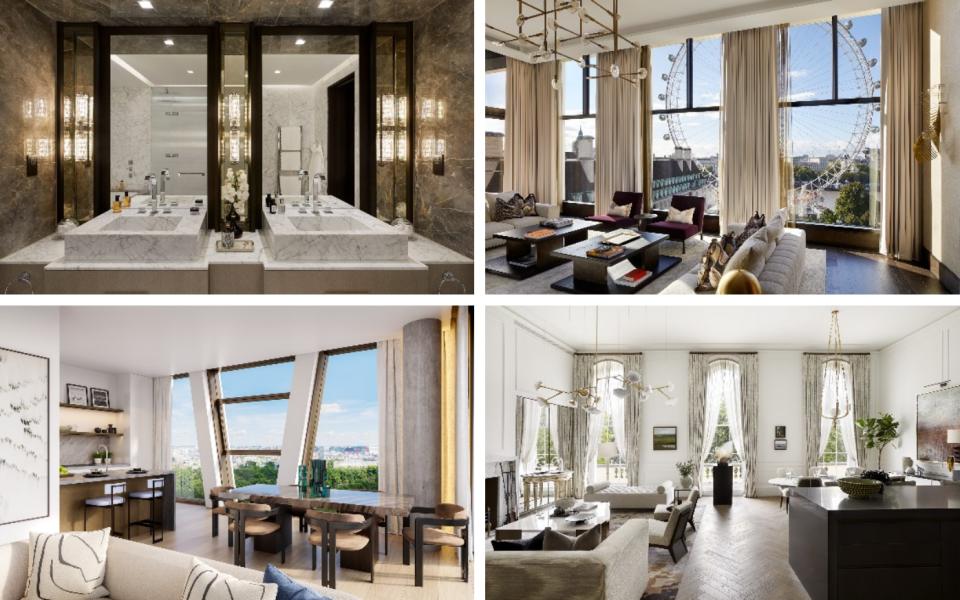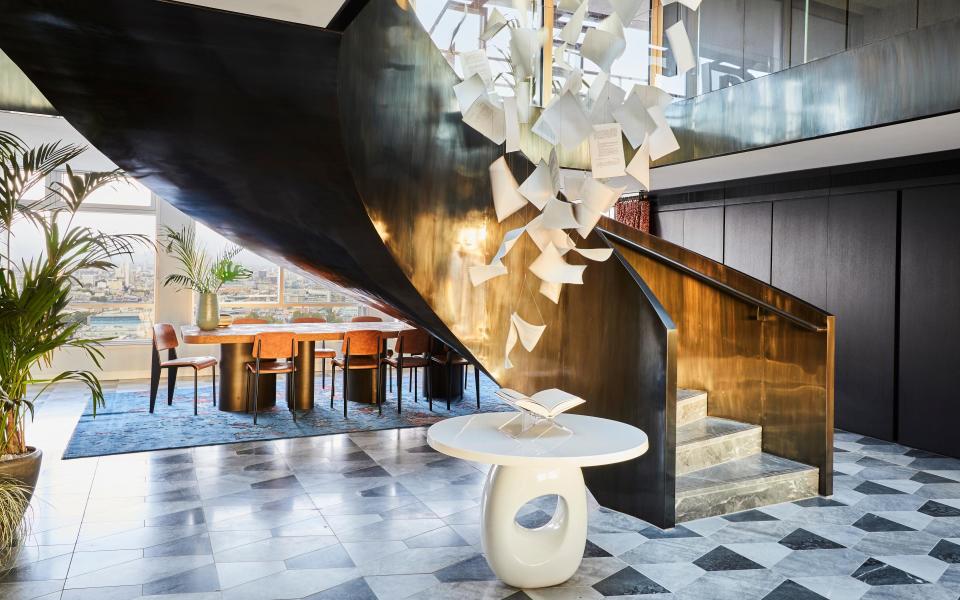How high ceilings became the super-rich status symbol of 2022

It's now no longer simply about how many square feet you have, but who has the highest ceilings because volume has become the new buzzword.
Until recently, it was rare to see ceilings of more than 2.5m in new-builds, stretching to 3m in super-prime homes. Now, 2.5m is the required minimum for new London properties – and developers know that big spenders want more. Ultra-high net worth buyers are partial to an ultra-high ceiling – and for developers, the way to woo them away from period townhouses in Kensington or Belgravia with their lofty first floor piano nobile is to create new luxury residences with the same exaggerated sense of height. “It’s a sacrifice from the developer’s point of view, as they can fit in fewer properties, but buyers crave volume,” says Ian Pidgeon, a partner at Knight Frank.
Some of the most spectacular examples are converted schools, such as The Sloane Building, a former Edwardian school in Chelsea, whose vast old hall has become one gargantuan residence, with bedrooms set on a mezzanine floor where the classrooms once stood. Still for sale is the £18.5m penthouse.
Or for what must be the most mind-boggling proportions in any London home, there’s the now-sold St Joseph’s Chapel in Mill Hill, where developers Berkeley Homes and design company Alexander James Interiors had 14-metre ceilings to play with in the main body of the church. Their solutions included an elevated bedroom in a standalone glass pod in the nave – and super-sized furnishings, including flower vases the size of the average basketball pro.

Like breathing in big vistas of sea or countryside, such elevated spaces trigger in us an innate sense of wellbeing. “It’s human instinct to be wowed by big spaces, indoors or out,” says Alex Michelin, co-founder of Finchatton, designers of The Whiteley, the Six Senses-branded residential revamp of the old Whiteleys shopping centre in Bayswater. There, by virtue of it being a Grade I listed Victorian building, Michelin had ceilings of up to 6.1 metres to work into the design of the apartments. “It feels like you’re walking into a ballroom, with all the same sense of grandeur and scale,” he comments.
New-builds are increasingly realising the wow factor of a power ceiling, too. The £17.5m penthouse at Belvedere Gardens in Southbank Place looks directly over The London Eye – but the six-metre height of its living area demands you look up rather than out. Designers Goddard Littlefair have played with textured tactile walls, “to help with warmth and acoustics,” explains co-founder Jo Littlefair, and layers of softening, such as a tall, illuminated leather-backed bookcase with punches of colour. “It gives it a bit of a New York, transatlantic feel,” says Littlefair, while Brian De’ath, the development’s head of residential, thinks “for the buyer, it adds theatricality and a sense of prestige”.

Agents tend to agree that buyers will pay a 10-20% premium for excessive ceiling height. But there’s no official way of valuing volume in property. At Regent’s Crescent in Marylebone, the residences – which start at £2.9m for two-beds - have 4.25m ceilings, “51% more cubic area than the average unit, for a similar price point,” points out Chris Richmond, director at developers CIT. “Unfortunately, there isn’t yet a way to measure this kind of property,” he adds.
It’s just as well the value of head space remains notional, thinks Tim Banks, CEO at Octagon, the luxury house builders for whom a triple-height entrance hall, usually with a cascading chandelier, is a trademark feature of their Surrey mansions. “Otherwise,” he adds, “even a humble utility room would have an 11-foot ceiling.”
And agents would never get their heads around cubic volume, thinks Knight Frank’s Ian Pidgeon. “It’s more a case of asking ‘what does ceiling height do?’ Buyers will definitely pay a 12-15% premium for a property with a 4.5m ceiling versus one in the same building with 3m. And that could rise further depending on supply and demand.”

In a sense, paying a premium for a high ceiling is paying for thin air. “High ceilings are a status symbol. Russians in particular are notorious for desiring them. But you are paying a high price for space you aren’t using,” says Guy Meacock, director of Prime Purchase buying agency.
Ah, but are you? The super-rich have all sorts of creative ways of using their extra quota of thin air. Displaying art collections is a favourite. “Some of our clients have amassed substantial collection of art often worth more than the house itself, so high ceilings and therefore sizeable wall space mean they have more room to display their prized Picassos,” comments James Quirk at Queens Fine Art in London, who reports a rising number of clients – “particularly our younger clientele who want the wow factor” - wanting artworks to be installed on double and triple height walls.
Mezzanine floors are a popular way to make those out-of-reach square feet usable. Some use them for high-rise reception rooms or media rooms, such as in the £5.95m Chapel at Hampstead Manor.

It’s a good excuse for a statement staircase too, such as the one in the £55m penthouse at Centre Point, whose ceilings sit some 8.1 metres up. And that’s just asking to be set off by a huge, vertical light or vast installation. “You want volume, but it needs to feel personal, not overwhelming. The value lies in the platform you create – for example, the penthouse’s bar reaches 5.4m in height, so we commissioned the artist Richard Long to paint right on the wall here. It’s bold and reflects who we think will live here,” says Kathrin Hersel, executive director of the developers Almacantar.
Others like to accentuate the sense of height with tapestries, murals – or olive trees, says Will Watson, head of London at The Buying Solution, a buying agency, recalling one client’s 10ft specimen in their living room. “We have also seen clients feature gorgeous suspended chairs hanging from the ceiling, and with the rise in people wanting to work out at home, we’ve recently seen a gravity gym where all workouts are done by being suspended from the ceiling using straps.”
Perhaps the ultimate in decadent use of over-sized head height, though, is the client of Edward Towers’ at Aykroyd & Co, who hung his £5m Pagani Zonda R supercar on the wall. Say no more. Except that high ceilings are all about balance. Everything else needs to be XXL too, from the doorways and cornicing to the sofa and artwork. Otherwise, you look like one of those people who thought they were buying a full-size dining table for a bargain on eBay and ended up with the dolls house version instead.

 Yahoo Finance
Yahoo Finance 